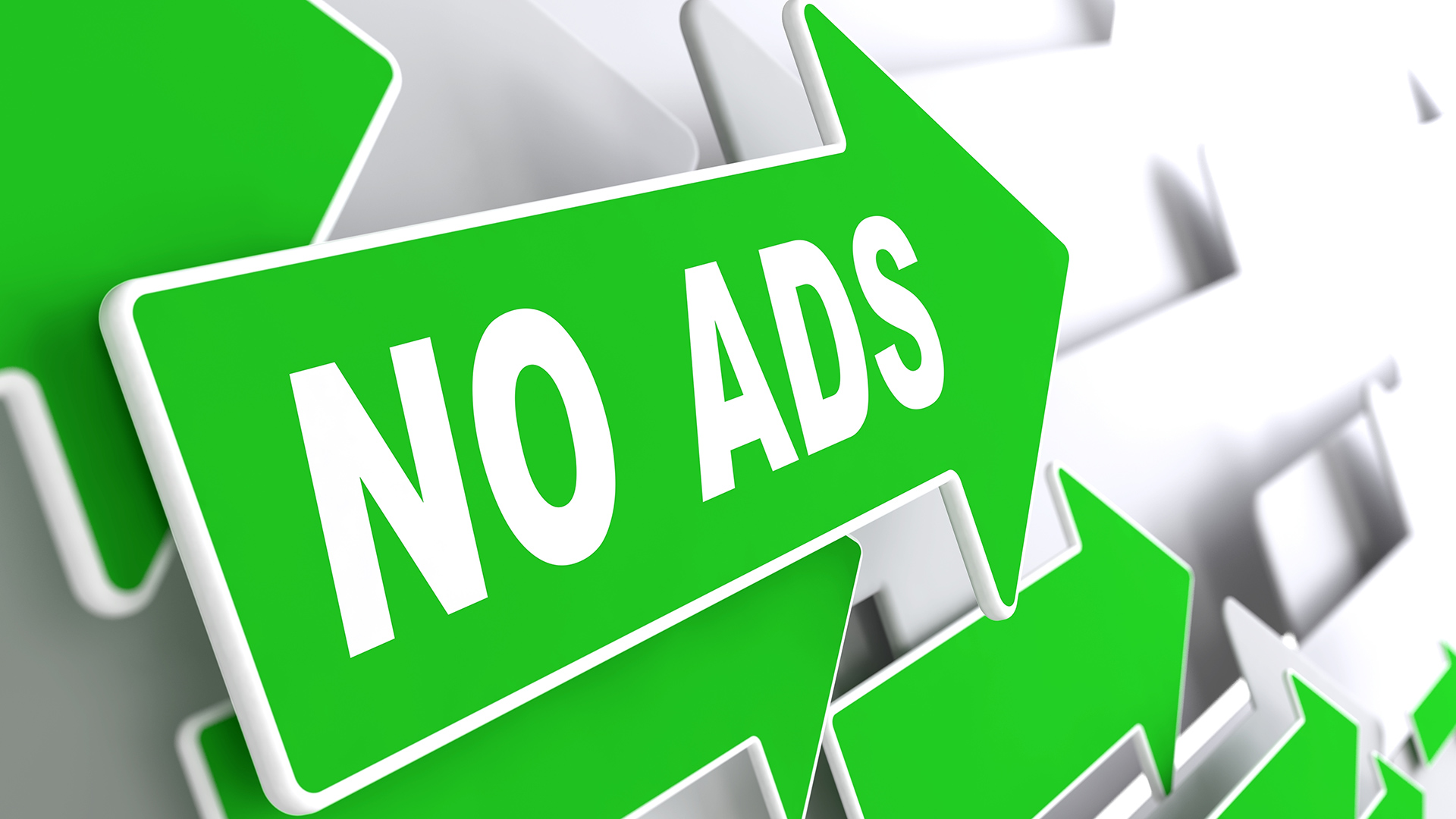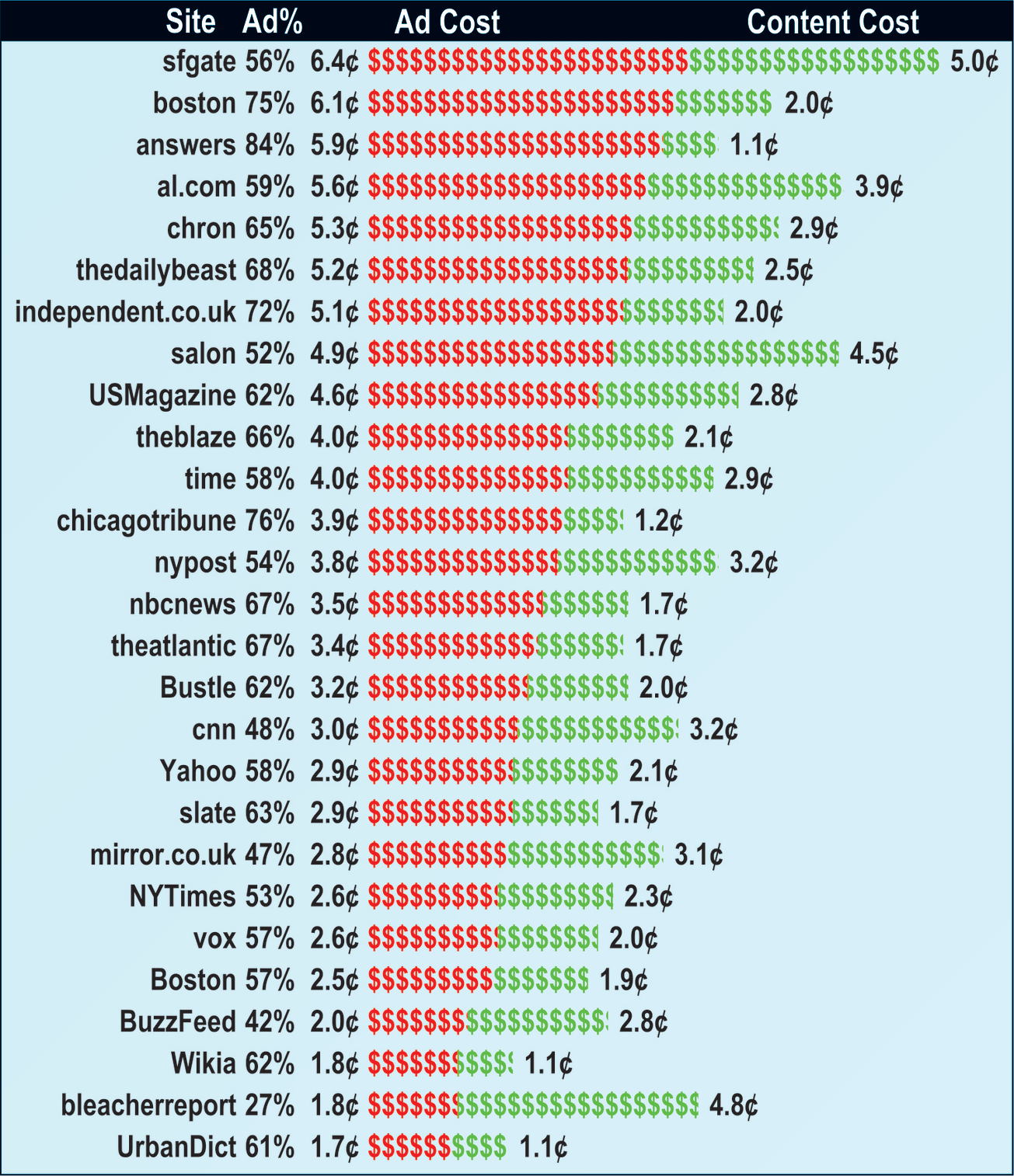Purify Ad Blocker Believes Paying A Few Cents For News Stories Is Too Much
Data savings from ad blockers might not translate into actual savings.
Ad blockers — and concerns publishers have about them — are far from dead. But they’re hardly the talk of the town now that they’ve dropped from the top apps for iPhone charts. Enter the Purify ad blocker with a new PR push: Look at how much consumers pay in data for the ads they’re shown!
From the release the company put out today:
If an average user visits a dozen typical websites every day for a month, the cost to the user is approximately $11.16 to see the content and another $19.44 for the privilege of downloading the advertisements. Over a year, this adds up to a single user paying over $233 to view web-based ads that were never requested.
Got that? Use Purify’s ad blocker, and you’ll save $233 per year in data, users!
I’ve got all types of issues with this survey and that claim. Let’s start with the idea that by not seeing ads, the users will save on data costs. Not necessarily so.
Doing The Ad-Blocking Math
It’s easy to figure out how much data an ad consumes. Translating that data into a dollar amount is tricky, when people are on different plans. For its calculations, Purify worked with an average cost of data being $10 per gigabyte.
From that, Purify ran a test against about 30 popular websites, mostly news sites, to calculate the cost of visiting them in terms of the data used to show ads. On average, it found that it cost $0.031 in data for the ads shown on an average web page.
Continuing, Purify declared if an average user visits “a dozen typical websites” each day for a month, the cost for data to show those ads would be $19.44 over the month, or $233 per year. That works out like this:
- 20 web pages per day = $0.65
- 627 web pages per month = $19.44
- 7,524 web pages per year = $233.28
See how much savings there is to be had, just by paying $2 to use Purify to do an end-run around those ads?
Would You Really Save?
Well, maybe not. First, with Purify’s assumption, a typical person is using nearly 2 GB per month just on web surfing. That’s not including streaming music or video, which use much more bandwidth than web pages. Where do those fit in?
As it turns out, it might be that Purify is overestimating the bandwidth that pages and ads consume. After all, last year Mobidia found that people in the US typically consumed only 1.8 GB of cellular data.
People, of course, consumed much more when WiFi is factored in. But WiFi data, unlike cellular data, is usually much cheaper than the $10-per-gigabyte assumption Purify is making.
Even if people were using entirely cellular data, the savings promise may fall apart when you look at the reality of plans.
Let’s say you’re on AT&T’s $50 plan, which offers 5 GB of data. Let’s also assume you use Purify and get exactly the savings as it perfectly assumes — you save about 1 GB of data by blocking ads.
You can’t just drop down to a 4-GB plan and save $10. There is no 4-GB plan to get that savings. You have to drop all the way down to a 2-GB plan, which you probably won’t, because you’re likely using data for things other than web surfing.
It’s a similar case with Verizon. If you’re on the $45 plan, which gives 3 GB of data, then saving 1 GB of data doesn’t mean you save $10. You can only save money with Verizon if you think you can get by on its lowest plan, 1 GB for $30.
A Few Cents Is Too Much
Really, though, the bigger problem I have with Purify’s PR pitch is how greedy and callous it sounds.
When the New York Times did its own “cost of mobile ads” test in October, many, including me, were shocked at the cost as expressed in time. It took a long time for some ads to load versus the editorial content. That’s a real problem for users and advertisers alike.
Slow-loading ads are a bad experience for users. They might give up on the content. Slow-loading ads also mean publishers have a problem. If users don’t wait for those ads to load, they aren’t getting paid. As for advertisers, slow-loading ads means less exposure to the audience they’re after. There’s a great incentive all around for ads to be faster.
Another well-received argument for ad blockers is that they limit intrusive tracking. Consumers have good reason to be paranoid that ad trackers are gathering too much about their behavior. Ad blockers can help with this and have served as a good wake-up call for the ad and publishing industry to consider better tracking policies.
But the data savings for using ad blockers? Let’s look at the per site breakdown:
Complaining that someone had to effectively pay 3¢ for a news article at the New York Times isn’t a great argument. What, journalism isn’t even worth 3¢? Or, even 6¢, at the worst?
The Purify release suggests that even these tiny amounts are too much:
While some people tout the existence of a “social contract” that trades advertising for access to content, the intrusive nature of advertisements on many of today’s websites costs customers much more than is widely acknowledged.
The average American mobile plan charges around a penny for each megabyte of data; routinely visiting pages of an ad-heavy website can cause consumers to exceed their data plan simply by loading advertisements whose length exceeds that of the content.
I’ve never heard anyone complain that regularly reading the New York Times and other news sites is a serious drain on data. If that were the case, you’d expect many of the subscription offerings these publications have to include removal of ads as a benefit.
Rather, it seems that as Purify has disappeared from the top charts, it’s looking for some new angle to gain back customers. I’d suggest it return to the arguments about increasing speed and limiting tracking rather than literally promoting the idea of taking pennies away from publishers.
Opinions expressed in this article are those of the guest author and not necessarily MarTech. Staff authors are listed here.
Related stories

